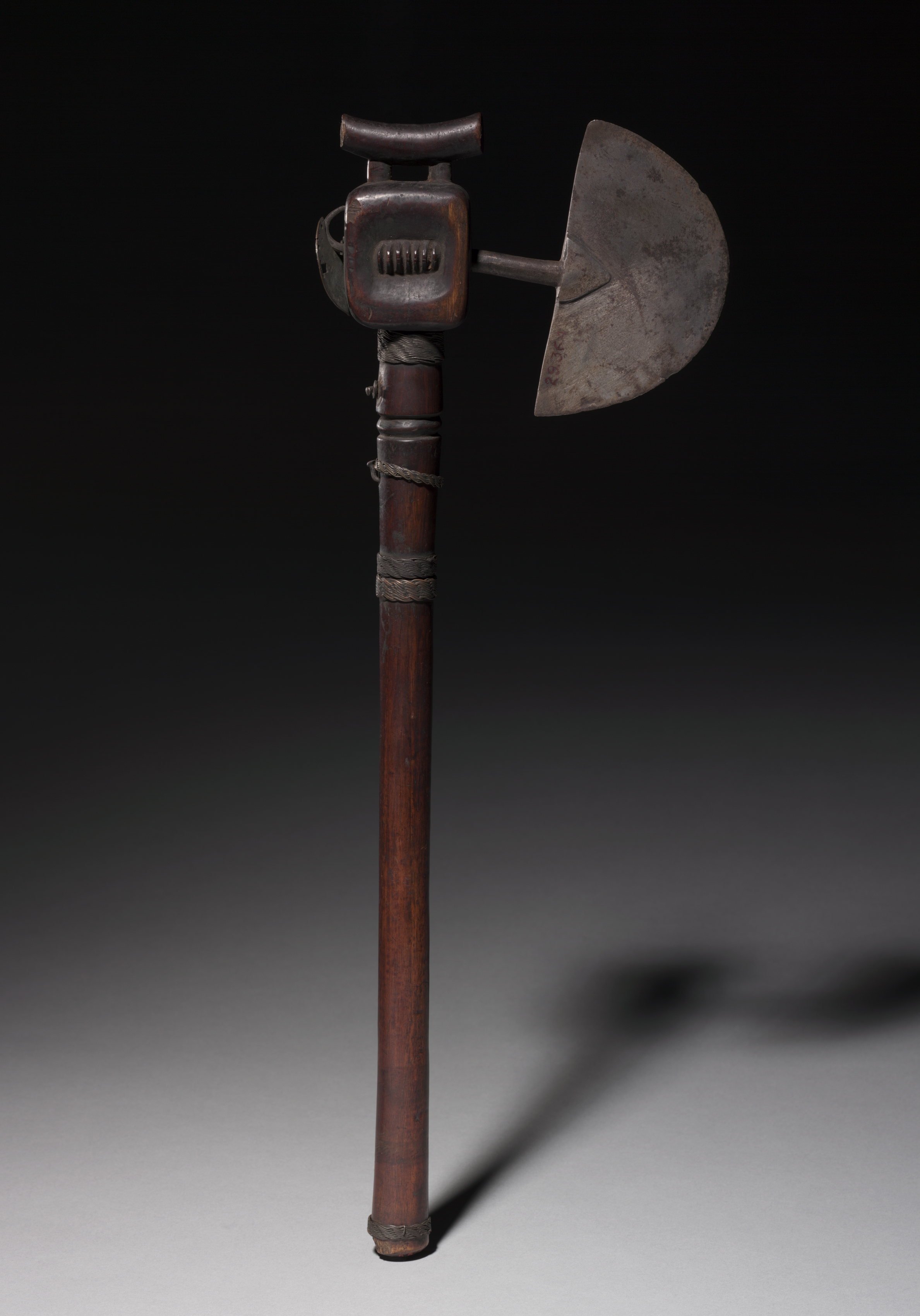The Cleveland Museum of Art
Collection Online as of April 20, 2024

Ceremonial Axe (gano)
1900s, by 1928
Overall: 15.8 cm (6 1/4 in.)
Location: not on view
Did You Know?
This ceremonial axe has a half-moon piece of metal nailed to it, marked "EKB Depose." It is part of the mechanism for a pocket watch made by Edward Kummer of Bettlach, whose Swiss factories marked watches with his initials between 1888 and 1932.Description
This ceremonial axe (gano) showcases its maker’s skill in using different materials. The crescent-shaped blade was likely locally forged; braided wires and a Swiss pocket watch fragment on the handle were imported. Like the headrest nearby, gano were gendered female; a small headrest is carved at top. Too fine for battle, a man may have held it as a status or ancestral symbol during rituals or dancing. Though made for centuries, religious use of knives and axes waned due to early 20th-century Christianity and government laws. Rising independence-era Zimbabwean nationalism (1960s–70s) revived tradition-based religion and associated objects like the gano.- 1927–28Collected by Paul B. Travis on behalf of the Gilpin Players at Karamu House and the African Art Sponsors1927–28The African Art Sponsors and the Gilpin Players1929–The Cleveland Museum of Art by giftProvenance Footnotes1 12/3/1928 letter to the Cleveland Museum of Art and the Cleveland Museum of Natural History from Hazel Mountain Walker (Gilpin Players, president) and Harry E. Davis (African Art Sponsors, president) reproduced on p. 54 of Adams, Henry et al. Paul Travis 1891-1975. Cleveland Artists Foundation, 2001.
- Arts of Africa: Gallery Rotation (African art rotation). The Cleveland Museum of Art (organizer) (December 10, 2021-July 2, 2023).
- {{cite web|title=Ceremonial Axe (gano)|url=false|author=|year=1900s, by 1928|access-date=20 April 2024|publisher=Cleveland Museum of Art}}
Source URL:
https://www.clevelandart.org/art/1929.364